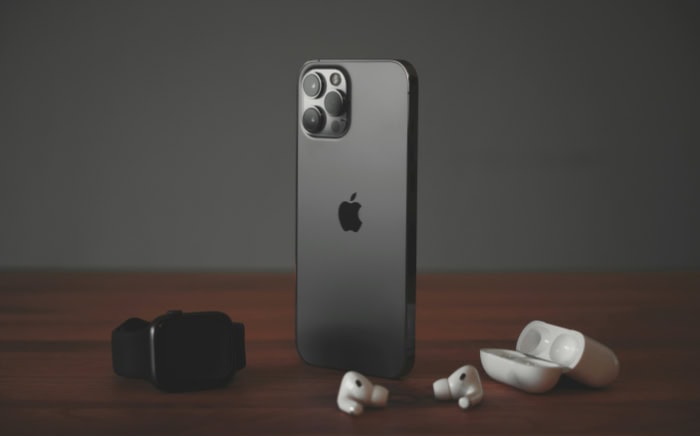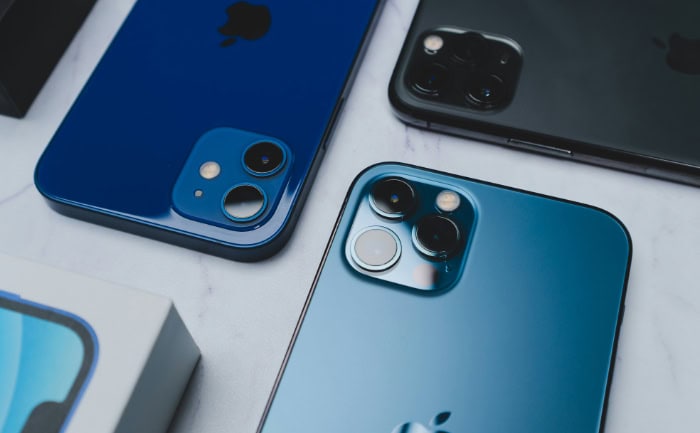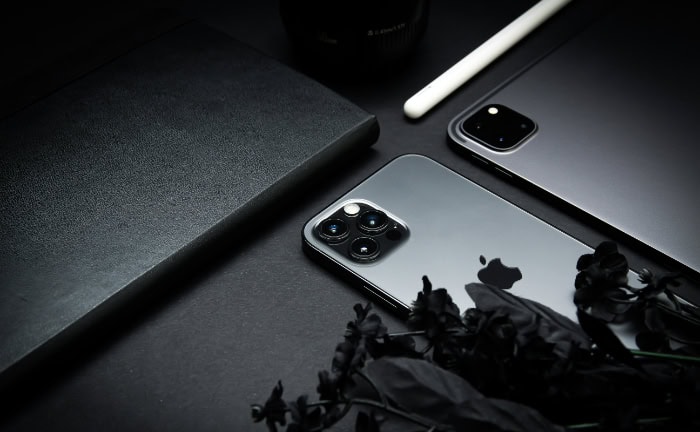How Long Do iPhones Last? When to Upgrade and Why

Imagine your trusty iPhone, once a sleek and speedy companion, now struggles to keep up with your daily demands. Apps take ages to load, the battery drains faster than a leaky faucet, and you’re constantly running out of storage space.
Sound familiar? As much as we love our iPhones, they don’t last forever. But just how long can you expect your device to stick by your side before it’s time for an upgrade?
iPhone Lifespan: What to Expect
When it comes to the longevity of iPhones, the answer isn’t as straightforward as you might think. On average, iPhones can last anywhere from 3 to 6 years, and sometimes even longer, depending on various factors such as user habits, device care, and hardware specifications.
While some users may feel the need to upgrade their iPhones every couple of years to keep up with the latest models and features, others may find that their trusty device continues to serve them well for an extended period.
iPhone Longevity to Other Smartphones
In the smartphone market, iPhones are often praised for their longevity and extended software support compared to their Android counterparts. Apple’s tight integration of hardware and software, combined with their commitment to providing iOS updates for older devices, contributes to the longer lifespan of iPhones.
While some high-end Android smartphones may rival iPhones in terms of hardware durability, the fragmented nature of the Android ecosystem means that software updates and support can vary greatly between manufacturers and models.
Lifespan Differences: Regular vs. Pro/Plus Models
When it comes to the different iPhone models, such as the regular versions and the “Pro” or “Plus” variants, there may be some differences in longevity. The higher-end models often boast more advanced hardware, such as increased RAM, more powerful processors, and larger batteries, which can contribute to better performance and battery life over time.
Additionally, the premium materials used in the construction of Pro models, like surgical-grade stainless steel or titanium, may offer enhanced durability. However, it’s important to note that the actual lifespan of an iPhone, regardless of the model, is heavily influenced by factors such as user behavior, device maintenance, and exposure to environmental stressors, which we will explore further in the upcoming sections.
Factors Impacting iPhone Longevity
While iPhones are known for their durability and longevity, several factors can influence how long your device will last. From hardware quality to software updates and user habits, understanding these elements can help you make informed decisions about your iPhone’s care and when it might be time to consider an upgrade.
Hardware Durability and Build Quality
One factor that contributes to the lifespan of an iPhone is its hardware durability and build quality. Apple is renowned for using high-quality materials and manufacturing processes in their devices.
The aluminum, stainless steel, or titanium frames, along with the durable glass screens, provide a level of protection against everyday wear and tear. However, it’s important to note that no iPhone is indestructible, and accidental drops or impacts can still cause damage, regardless of the model.
Battery Health and Capacity Over Time
Another critical factor in determining an iPhone’s lifespan is its battery health. Over time, the lithium-ion batteries in iPhones degrade, leading to reduced capacity and shorter charge cycles.
This degradation is a natural process that occurs with all rechargeable batteries. As the battery health declines, you may notice your iPhone lasting for shorter periods between charges and eventually reaching a point where it needs to be replaced.
iOS Updates and Performance on Older Devices
Software also plays a significant role in the longevity of iPhones. Apple regularly releases new versions of iOS, introducing new features, performance improvements, and security patches.
While these updates are designed to enhance the user experience, they can sometimes have a negative impact on older iPhones. As newer iOS versions are optimized for the latest hardware, older devices may struggle to keep up, resulting in slower performance, reduced battery life, and potential compatibility issues with certain apps.
However, Apple does offer the option to continue using an older iOS version if desired.
User Habits and Environmental Factors
Finally, the way you use and care for your iPhone can significantly impact its lifespan. Habits such as regularly exposing your device to extreme temperatures, moisture, or dust can take a toll on its components.
Overcharging, letting the battery drain completely, or using unauthorized chargers can also degrade the battery more quickly. Additionally, factors like the frequency of use, the number of apps installed, and the amount of storage consumed can affect the overall performance and longevity of your iPhone.
When to Replace Your iPhone

As much as we grow attached to our iPhones, there comes a point when it’s time to consider an upgrade. But how do you know when that time has arrived? Several telltale signs can indicate that your iPhone is reaching the end of its lifespan and may no longer be able to keep up with your needs.
Significant Battery Degradation
One of the most obvious signs that it’s time to replace your iPhone is when you experience significant battery degradation. If you find yourself constantly tethered to a charger or needing to charge your iPhone multiple times a day, it’s a clear indication that the battery is losing its capacity.
While you can replace the battery to extend your iPhone’s life, if other issues persist, it might be more cost-effective to upgrade to a newer model.
Performance Issues and App Crashes
Another red flag is when your iPhone starts to experience noticeable performance issues. If you encounter frequent app crashes, sluggish response times, or general slowdowns, it could be a sign that your device is struggling to keep up with the demands of newer software and apps.
While clearing storage space and updating to the latest iOS version can sometimes help, persistent performance problems are often a signal that it’s time to consider a new iPhone.
Lack of Software Updates and Security Patches
As Apple releases new versions of iOS, older iPhone models may eventually lose support for the latest updates. When your iPhone no longer receives software updates and security patches, it can leave your device vulnerable to potential security risks and compatibility issues with newer apps.
If your iPhone is no longer eligible for the latest iOS updates, it’s a strong indication that it’s time to upgrade to a newer model that will receive ongoing software support.
Physical Damage or Malfunctioning Components
Lastly, physical damage or malfunctioning components can be a deciding factor in whether to replace your iPhone. If your device has suffered significant damage, such as a cracked screen, water damage, or a failing camera or speaker, the cost of repairs may outweigh the benefits of holding onto an older model.
In some cases, the damage may be extensive enough that repair isn’t even feasible, making an upgrade the only viable option.
Extending Your iPhone’s Life
While it’s inevitable that your iPhone will eventually show signs of age, there are several strategies you can employ to prolong its lifespan. By adopting good habits and taking proactive steps to care for your device, you can ensure that your iPhone remains a reliable companion for as long as possible.
Proper Charging Practices for Battery Health
One of the most effective ways to extend your iPhone’s lifespan is by practicing proper charging habits. Avoid letting your battery drain completely, as this can put extra strain on the device.
Instead, try to keep your battery level between 20% and 80% for optimal performance. Additionally, use Apple-certified chargers and avoid leaving your iPhone plugged in for extended periods after it reaches 100% charge, as this can lead to overheating and battery degradation.
Using Protective Cases and Screen Protectors
Investing in a high-quality protective case and screen protector can go a long way in minimizing physical wear and tear on your iPhone. Cases provide an extra layer of defense against drops, bumps, and scratches, while screen protectors help prevent cracks and damage to the display.
With a wide range of options available, from sleek and slim designs to rugged and heavy-duty protection, you can find a case and screen protector that suit your style and needs.
Regular Cleaning and Maintenance
To keep your iPhone in top condition, regular cleaning and maintenance are essential. Use a soft, lint-free cloth to wipe down your device, removing any dirt, grime, or fingerprints.
Be cautious when cleaning around ports and openings, and avoid using harsh chemicals or abrasive materials that could damage the surface. Additionally, consider using compressed air to gently remove dust and debris from hard-to-reach areas, such as the charging port or speaker grills.
Optimizing Storage, Apps, and Background Processes
Over time, your iPhone’s storage can become cluttered with unused apps, old files, and cached data, which can impact performance. Regularly review your installed apps and delete those you no longer use to free up valuable space.
Keep your apps updated to ensure you have the latest bug fixes, performance improvements, and security patches. Additionally, be mindful of background processes and push notifications, as these can drain your battery and slow down your device. Adjust your settings to optimize battery life and overall performance.
Considerations for Upgrading

When considering whether to upgrade your iPhone, there are several factors to take into account. It’s important to assess your current device’s performance, evaluate the new features and improvements offered by the latest models, and consider your budget and the overall cost-benefit of upgrading.
Assessing Current iPhone Performance and Battery Life
Before deciding to upgrade, take a close look at your current iPhone’s performance and battery life. If you’re experiencing frequent slowdowns, app crashes, or your battery is struggling to hold a charge, it may be time to consider a new device.
However, if your iPhone is still running smoothly and meeting your needs, you may be able to hold off on upgrading for a while longer.
Evaluating New Features and Improvements in Latest Models
Each new generation of iPhones brings a host of exciting features and improvements. From advanced camera systems and faster processors to longer battery life and 5G connectivity, these upgrades can significantly enhance your iPhone experience.
Research the latest models and compare their features to your current device to determine if the new offerings justify an upgrade for your specific needs and preferences.
Budget and Cost-Benefit Analysis of Upgrading
Upgrading to a new iPhone is a significant financial decision, so it’s crucial to consider your budget and the overall cost-benefit of making the switch. Evaluate the price of the new iPhone model you’re interested in and compare it to the potential benefits it offers over your current device.
Consider factors such as improved performance, advanced features, and longer software support. If the benefits outweigh the cost and fit within your budget, upgrading may be a worthwhile investment.
Upgrading vs. Repairing or Refurbishing
If your current iPhone is experiencing issues or showing signs of wear, you may be tempted to upgrade immediately. However, it’s worth considering the alternatives of repairing or refurbishing your device.
In some cases, a simple battery replacement or screen repair can breathe new life into your iPhone at a fraction of the cost of a new one. Additionally, refurbished iPhones can offer a more budget-friendly way to upgrade while still enjoying many of the benefits of a newer model.
Weigh the pros and cons of each option to determine the best course of action for your specific situation.
Conclusion
From the hardware and software to our usage habits and the environment we expose them to, numerous factors influence the lifespan of these devices. By understanding these elements and adopting strategies to prolong their longevity, such as proper charging practices, using protective cases, regular maintenance, and optimizing performance, we can ensure our iPhones remain reliable companions for years to come.
However, there inevitably comes a time when we must consider upgrading to a newer model. Assessing our current iPhone’s performance, evaluating the latest features and improvements, and considering our budget and the cost-benefit of upgrading are all essential steps in making an informed decision.
It’s a personal choice that requires balancing our individual needs, preferences, and financial situation.
As technology continues to advance at a rapid pace, it’s easy to feel pressured to always have the latest and greatest iPhone. But it’s important to remember that upgrading isn’t always necessary, and a well-maintained device can still provide a satisfying user experience.
By finding the right balance between longevity and staying current, we can make the most of our iPhones while ensuring they serve us well for as long as possible.


